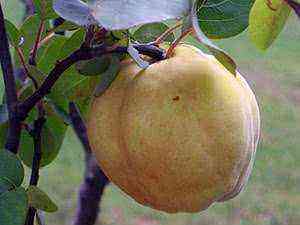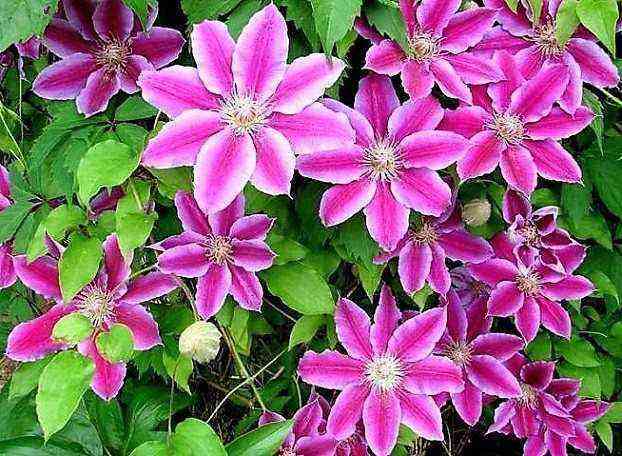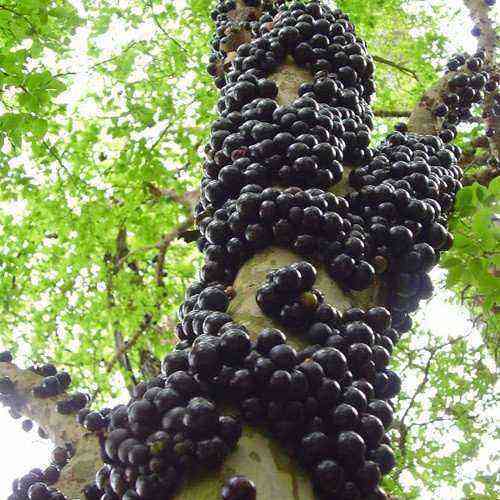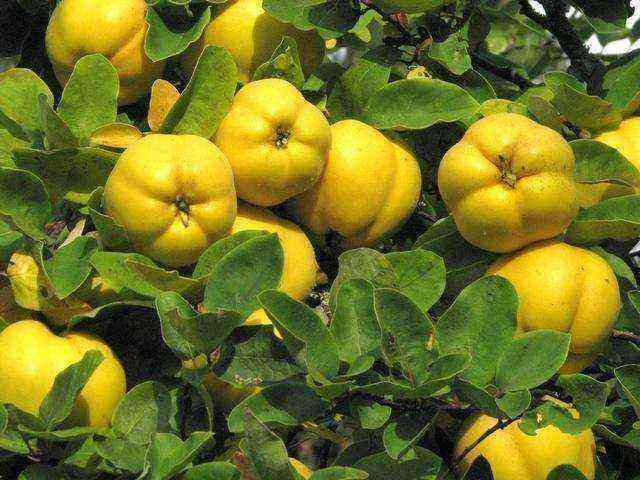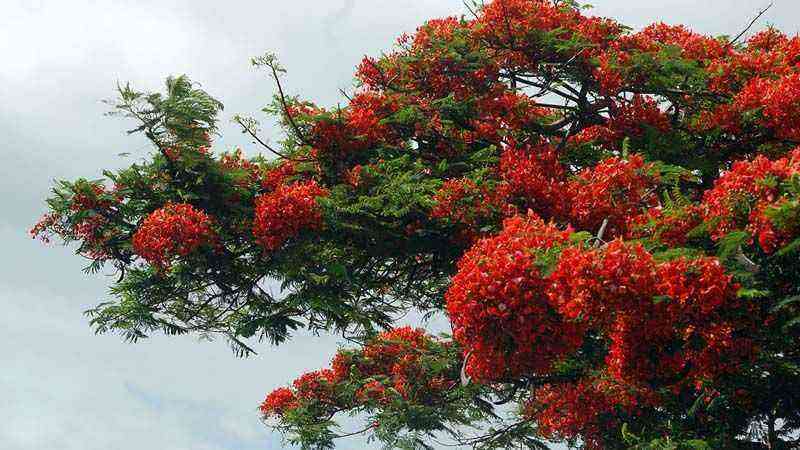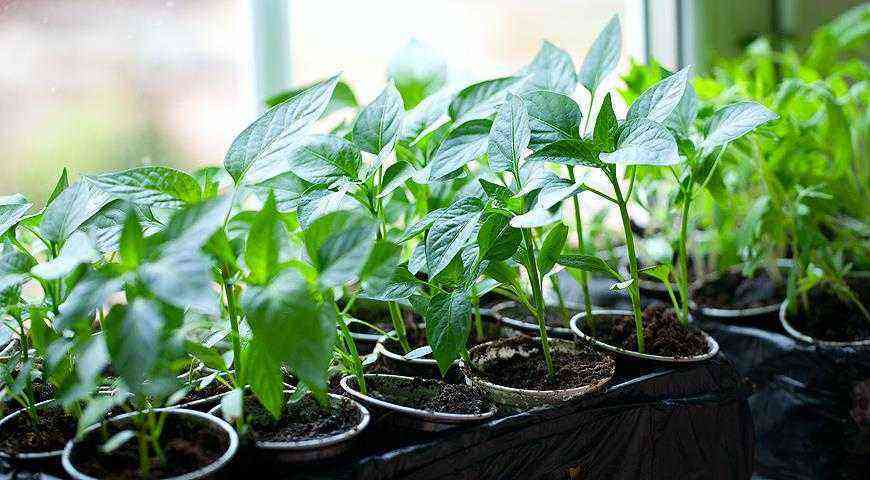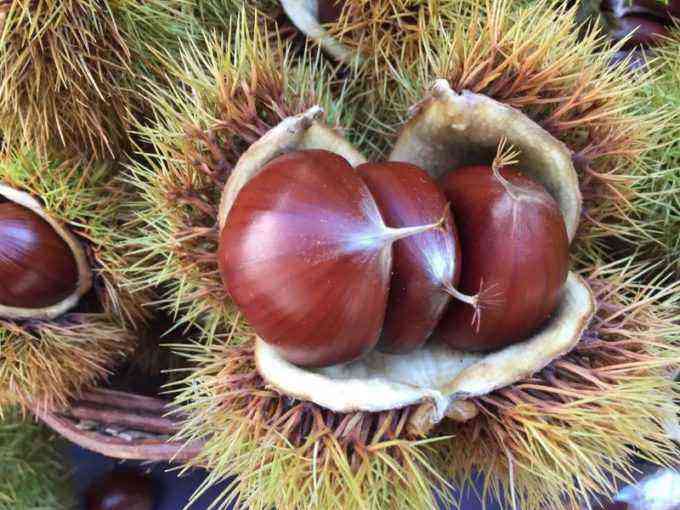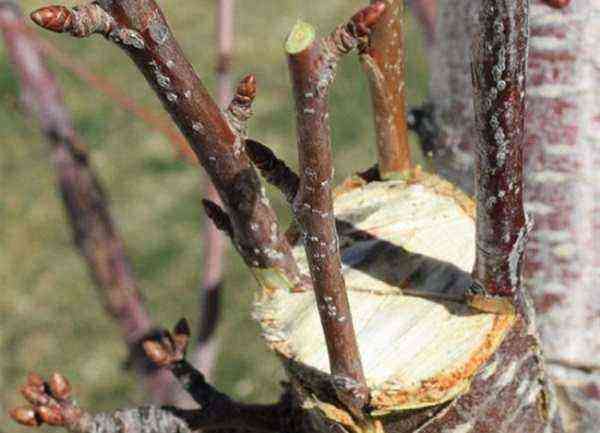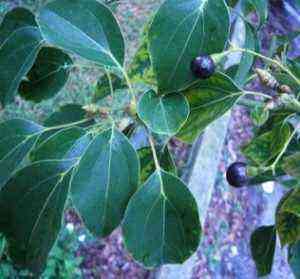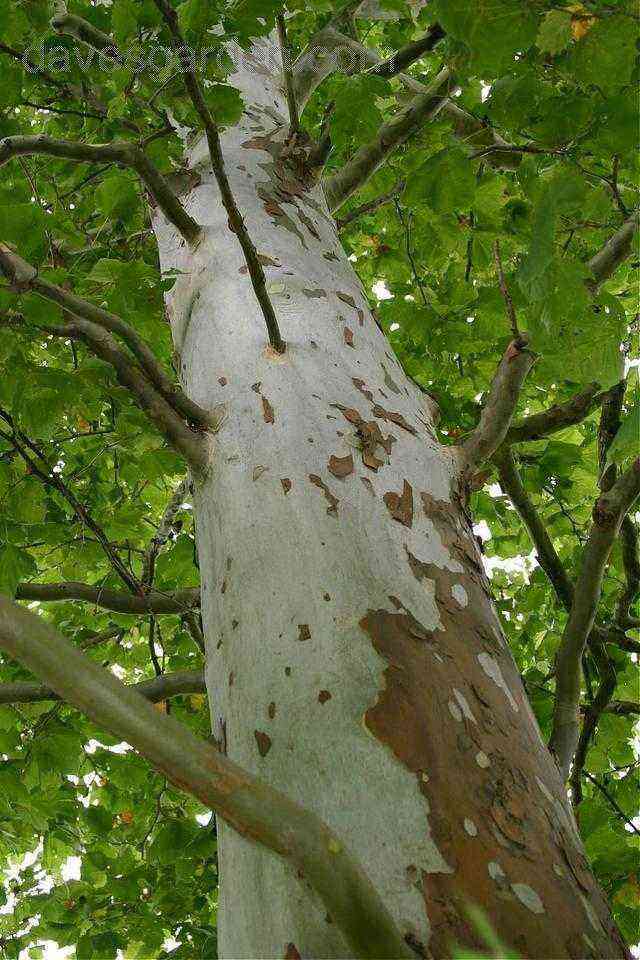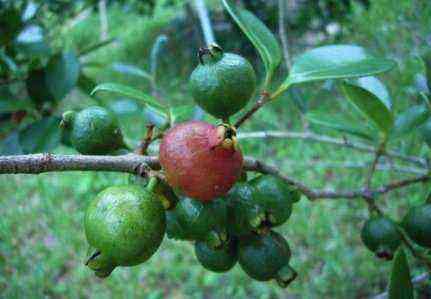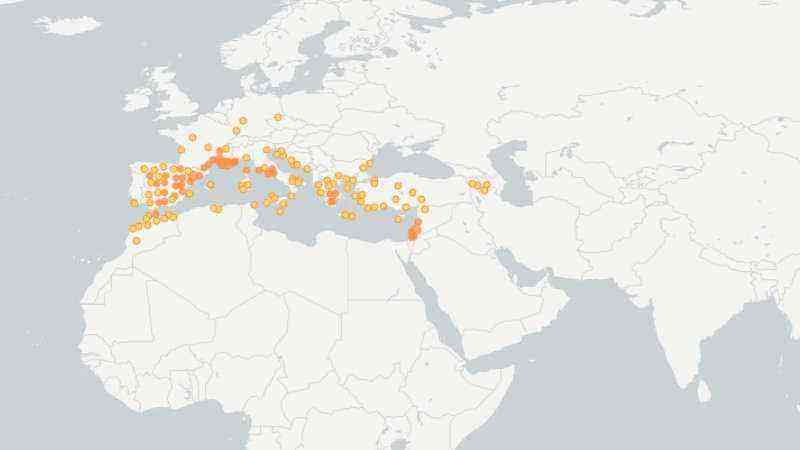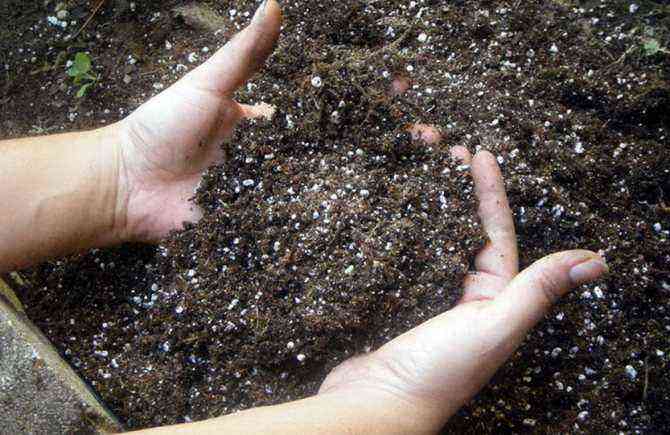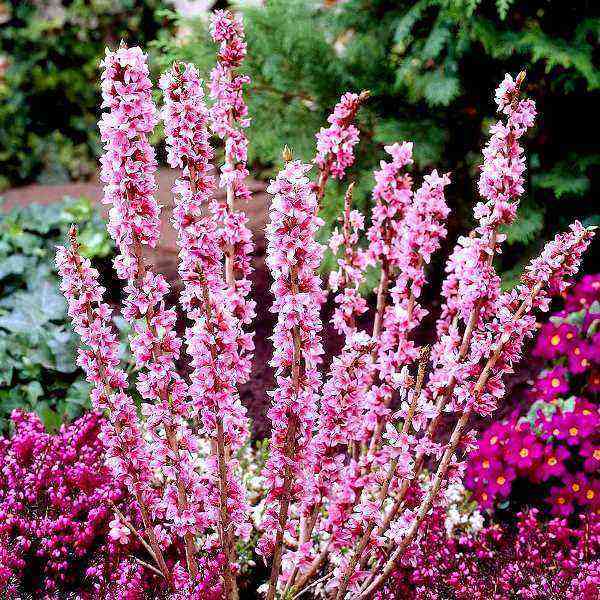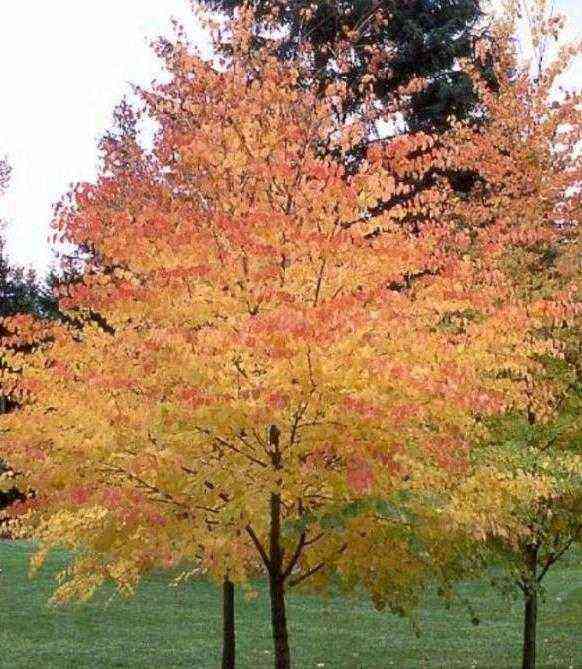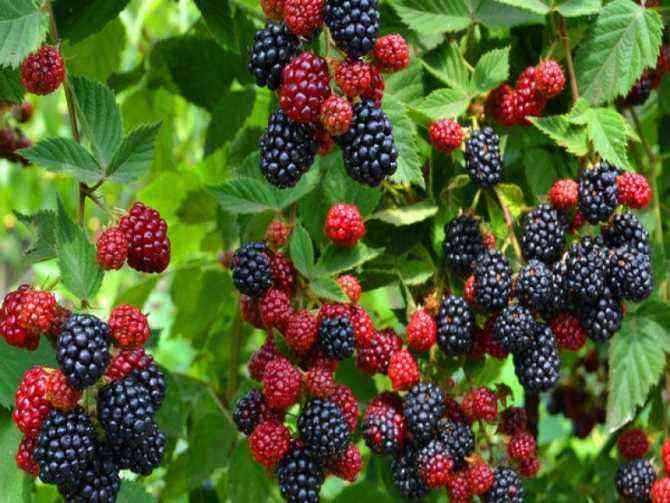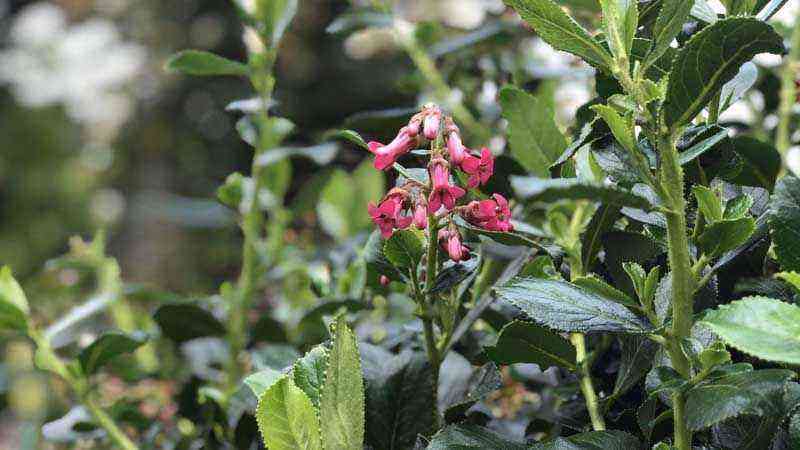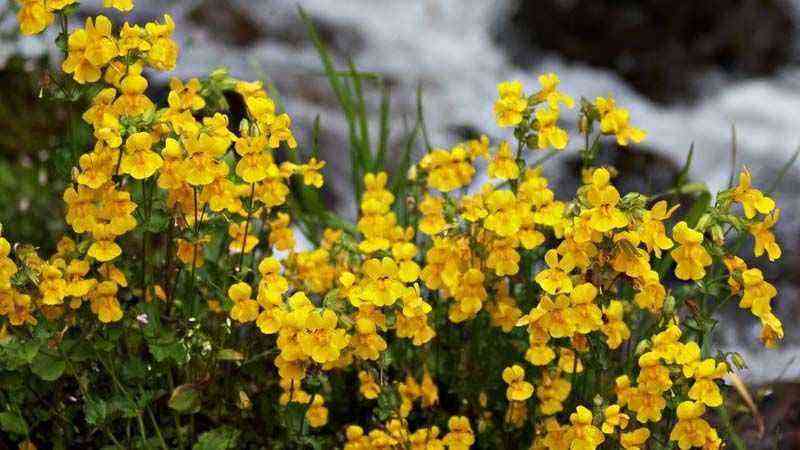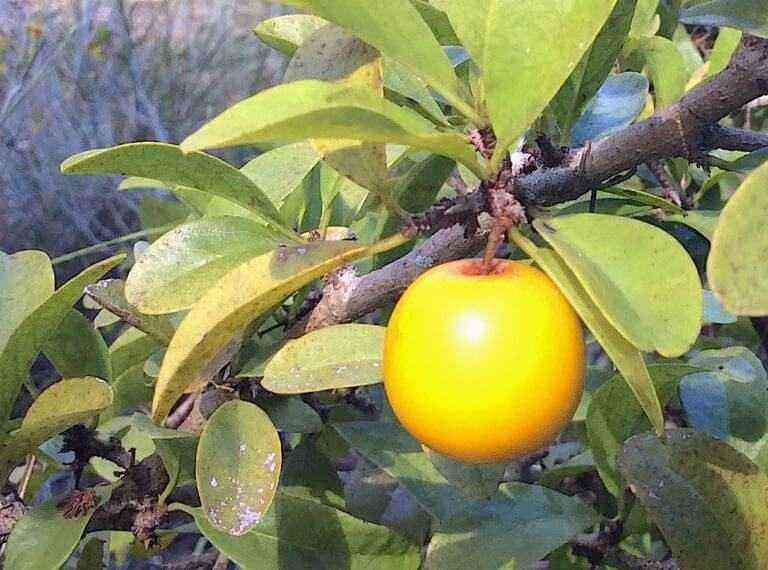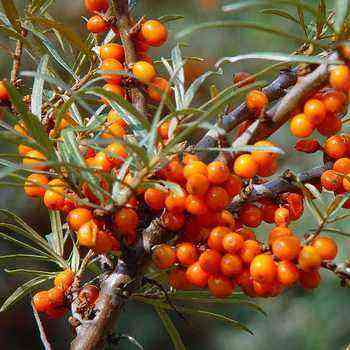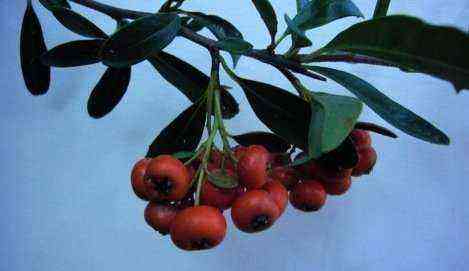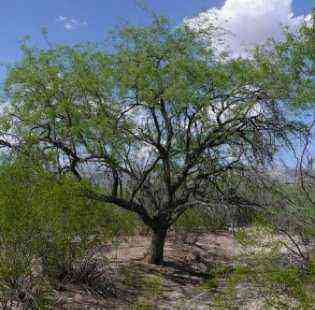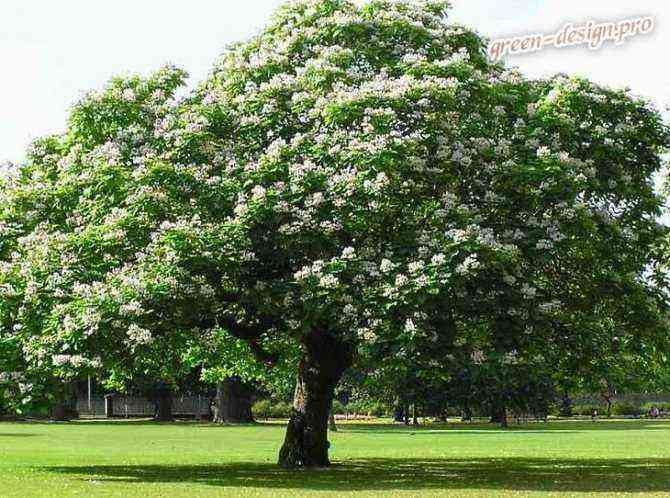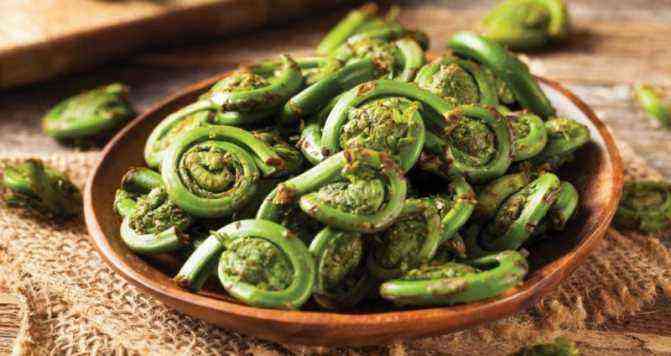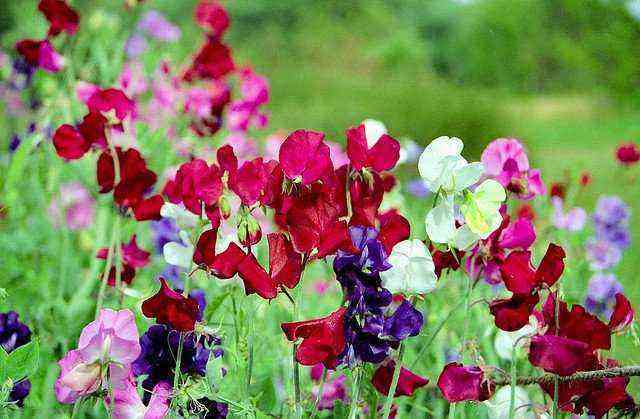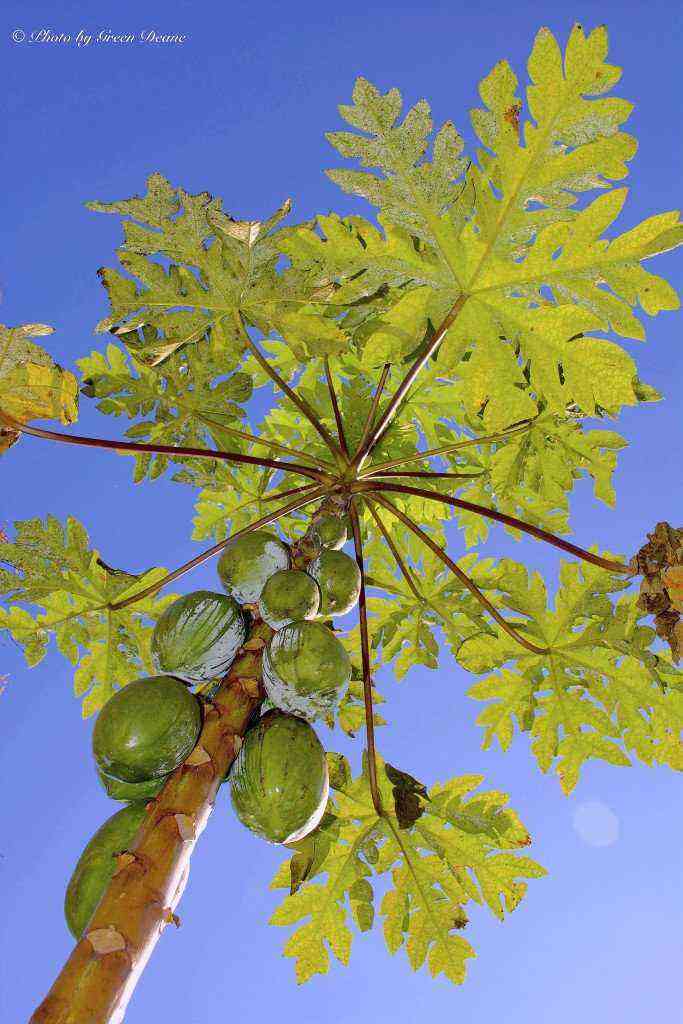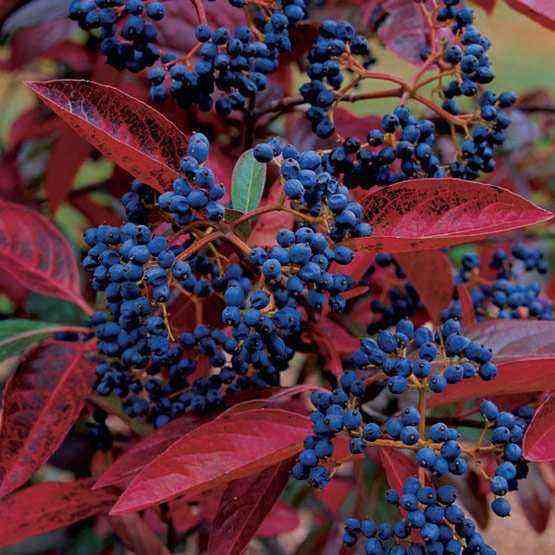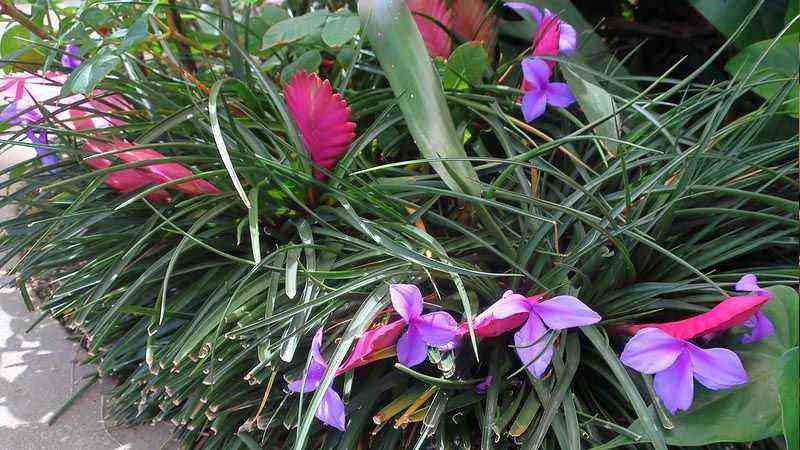
What kind of care does colliery need at home
Many Gesneriaceae are grown as flowering houseplants. These types also include collieria, home care for which will not cause serious trouble, but another green exhibit with bright bell flowers will appear in the collection.
In nature, the plant belonging to the Gesneriev family lives in the tropical regions of Central and South America. This is a perennial herbaceous shrub with thin, almost unbranched shoots, pubescent foliage and velvety tubular bells, which can delight the grower almost all year round.
Features of the color scheme in the photo and in the description
Ovate-pointed leaves sit oppositely on the shoots and, depending on the species and variety, can be not only green, but also purple, bluish or almost purple. Flowers in koleriya, as in the photo, are predominantly red and orange. But there are varieties with purple or pink bells. Variegated, speckled corollas are not uncommon. Flowers up to 4 cm in diameter are formed at the tops of the stems and are held on long peduncles.
If a competent regular care is established for the plant, colliery at home responds with massive flowering, when 15-20 flowers open on one bush at a time.


Unlike the closest relatives of gloxinia, which form tubers, a thickened scaly rhizome is formed under the soil cover in the coleria.
Types of coleria: photos of indoor crops
In nature, there are several dozen types of koleriya, but only a small part is grown as a pot culture. These plants are different:
in the size of the crown;
in the color of foliage and flowers;
in the place of growth in natural conditions.

Coleria pleasant or Kohleria amabilis is distinguished by a dark green or brownish foliage with a silvery thick pile. Stems, cuttings and veins have a purple hue. On the peduncles, one, two, or less often three flowers are revealed. The color of the corollas can range from pale pink or orange to crimson. In the type of koleria shown in the photo, it is not uncommon to have two-color corollas with a variegated, speckled pharynx.
Coleria fluffy or Kohleria eriantha is most often found indoors. Plants are easily recognizable by their olive green pubescent leaves, which appear brown due to the reddish hairs along the edges. The flowers of this type of koleria, as in the photo, have a predominantly bright orange-red color. In the mouth of the bell, the shade changes to yellow. Red or burgundy spots are scattered over the petals. Several flowers are revealed on the peduncles at once.
Koleria bogotá, Kohleria bogotensis or, in the alternative opinion of botanists, Kohleria amabilis var. Bogotensis, can be recognized by green downy leaves and red-yellow flowers with burgundy specks on the inner surface of the petals and throat.
In addition to a variety with an even green foliage, there are specimens of this type of coleria, as in the photo, striking the imagination of a grower with dark, brown-green foliage and the same shoots.
Coleria Varshevich or Kohleria warszewiczii is another plant species that deserves the attention of indoor plant lovers. This large variety of coleria has:
rather dense erect stems of dark green color;
pointed elliptical leaves;
unusual flowers with a lilac or pinkish tube and light yellow-green petals covered with purple or brownish specks.
A different name for the species shown in the photo is often used – foxglove coleria or Kohleria digitaliflora.
Home care for koleriya
Coleria is one of the most unpretentious plants in the family. It grows and blooms without any problems at room temperatures. Culture loves light, but in the hot sun it can wither, lose its decorative effect and drop flowers ahead of time, therefore, it is better to provide shading at noon hours on the southern windows. With a shortage of sunlight, the shoots stretch out, become disproportionately thin and weakened. The leaves are shrinking, flowering is not pleasing in mass.
In the cold season, many plants shed their leaves, complete flowering, and over time, their entire aerial part dies off. In this case, it is better to lower the air temperature by 5–7 ° C and reduce watering, only occasionally moistening the soil. In the spring, when the roots show signs of awakening, the pots are exposed to the light and resume the previous care of the color scheme.
If for the winter koleriya, as in the photo, preserves foliage, it still needs light, regular, but not as abundant as watering in summer and a temperature of 16-18 ° C.
In addition to watering and maintaining the optimal temperature, caring for your paintwork at home includes measures to humidify the air, which is especially useful on hot days and when the heating is running.
In the spring, koleriya are transplanted into nutritious loose soil. To do this, take a ready-made mixture for Saintpaulias or a universal substrate for flowering crops. Since the rhizomes of the plant are shallow below the surface, it is better to choose wide, not too deep containers, at the bottom of which drainage must be arranged.
The transplant is used to propagate colerias with parts of the rhizome. Small fragments with several dormant buds are separated from the mother plant, dried and dropped into the ground to a depth of 2 cm. After that, you just need to moisten the soil. And when sprouts appear above its surface, systematic care for the color begins, including monthly top dressing, which continues until autumn.
An obligatory stage in caring for a color scheme at home is the formation of a crown. It consists in pinching the growing and lying shoots. Apex removal stimulates:
awakening of the axillary kidneys;
branching;
the formation of new buds on the lateral shoots.
The cuttings obtained during the pinching can be rooted in water or in a substrate, thus obtaining, thus, not only a compact flowering plant, but also new young coleria of a favorite species.
When a couple of adult leaves appear on a small bush, pinch the top again to start crown formation. If the formation is not carried out, in most types of coleria, the shoots lodge, turning the plant into an ampelous one.
Coleria is a small, perennial plant of the Gesneriaceae family. In the XNUMXth century, it got its name in honor of the Swiss natural history teacher Michel Kohler. In old books, you can find its original name – Isoloma or Tydea. This plant has long been grown in apartments and houses, it is unpretentious, but at the same time it blooms very beautifully and profusely.
Types of coleria
Coleria grows in a small, compact bush, the height of which rarely exceeds 50 centimeters. She has scaly rhizomes, straight branches and large, velvety, green leaves. From June to September, the flowering period begins, and sometimes it can last throughout the year. It is the flowers covered with fine fluff that cause such a stir among lovers of home plants. They have the shape of elongated bells, with a long, tubular base, the color varies from pink to burgundy to white or red specks.
In the wild, it grows on the island of Trinidad and in the rainforests of South and Central America. There are about fifty species of this plant, however, three main, cultivated species are grown in indoor conditions:
Cholera pubescent
Coleria is pleasant
Cholera foxglove.
All three types are similar, but have their own characteristics. Their difference is, first of all, in the leaves. The pubescent flower has a dark brown edging of the leaves, the pleasant one has dark, but dull leaves, and the foxglove has a light green leaf color with reddish villi. Also, a pleasant color scheme is lower than other types.
Caring for paintwork at home
Coleria does not need anxious care, she is able to survive in an ordinary apartment with a moderate microclimate and without drafts, which she does not tolerate very well. Often, for the winter, it does not shed its leaves, like some tropical plants, moreover, it may even continue to bloom, but only under the right indoor conditions. If the plant has dropped the leaves, it is necessary to place it in a cool environment and occasionally moisten the soil. An important rule is the gradual change in the climate of the content. Sudden changes in temperature or a decrease in watering can have a detrimental effect on color.
The plant blooms very profusely. It looks beautiful, but after flowering, it is necessary to remove the dried flowers to make it easier for the plant to develop. To ensure consistent flowering, rich green leaves throughout the year, you need to follow a few simple rules.
Color content temperature
Moderate temperature around 18-22 degrees and humid air from March to November. If the ground part dies off for the winter and only the rhizome remains, you need to leave it in the room at a temperature of 15 degrees and water it occasionally so that the root does not dry out. If the ground part remains green for the whole winter, in order for the flower to feel comfortable, it is necessary to leave it in the same room as in the summer, but lower the temperature slightly to 18 degrees.
Reproduction of coleria
Reproduction of coleria can be done in three ways: by seeds, rhizomes, cuttings. The seeds are obtained by artificial pollination. Then they are sown in the ground, without crushing it, and wait for the shoots. The sprouts are first transplanted into one container, and then, after they grow up, they are transplanted one by one. Cuttings are planted in the ground or placed in water. When the leaves begin to appear, they pinch it and wait for the side shoots to appear, so that a neat bush turns out. By cuttings it is possible to propagate the plant throughout the whole year without harming the plant. Rhizome is propagated only in spring, during transplantation. A young root is planted in the ground and set to germinate. It is imperative to water it, but not too much, so as not to rot.
Landing koleria
To grow coleria, wide, shallow pots are used, since its rhizomes grow on the sides, and do not deepen.
The soil is best combined from peat and leafy soil, as well as sand. You can use ordinary, ready-made, purchased land, but it does not always suit this plant. Before use, it is better to treat the soil with a solution of potassium permanganate, in order to neutralize it from all kinds of harmful bacteria and pests. Drainage is mandatory for planting and transplanting in order to remove excess moisture, since due to abundant watering, rot may appear in the rhizome, and the plant will wither.
Koleria transplant
In the spring, annually it is necessary to transplant koleriya into new soil and, if necessary, a pot. During transplantation, the rhizome is examined, young shoots are planted so as not to crowd each other.
Watering throughout the spring and summer should be constant, but moderate, starting from mid or late autumn it is gradually reduced, and limited in winter. In principle, even if the plant is rarely watered, it will not wither, in this regard, the color scheme is unpretentious, and yet in the summer it is advisable to give it enough water so that the development of the flower does not slow down. Spraying is not recommended, since the plant has velvety flowers and leaves, which, if moisture gets on them, can become covered with white specks. But since the plant needs a fairly high air humidity, it is recommended to put a container of water next to it or spray the air around the plant without falling on the leaves. For irrigation, it is better to use settled, warm water.
Top dressing is carried out in the spring and summer about once a month, it is important not to overdo it with solutions so as not to harm the plant. It is better to flavor less often, but for the benefit than often to the detriment.
Of the most common pests that threaten the plant, aphids and spider mites can be called. True, they rarely touch color. And yet, if necessary, you need to treat the plant with a fungicide.
Coleria lighting
Bright light throughout the year is very important for this plant. If there is not enough light, the shoots will weaken, new ones will grow too thin and unable to hold leaves and flowers. As a result, the twigs will begin to sag, fall and the plant may die. It should be borne in mind that the light should be bright, but not direct. Direct sunlight is also detrimental to koleria, as well as their complete absence. Therefore, the plant is darkened, but not completely removed from the light.
Description and photos of popular types of koleria
Kohleria is a small, perennial, abundantly flowering bush.
It was named so in honor of the teacher of botany Kohler from Zurich (19th century).
There are other names of the plant – break and tydea.
The homeland of koleria is the tropics of Central and Latin America.
Coleria: varieties and photos
The delight of amateur flower growers is caused by its bright, fluffy flowers, close to bells in shape. The color varies from pale pink to maroon, with the presence of colored blotches (strokes, dots, patterns).
Some species (ampelous) are grown in pots. Velvet leaves can be small or with large teeth, more often – a dark green color.
The ampallang coleria is distinguished by its fuchsia color, white-yellow petals and a straw. The decoration is a purple speck. The green leaf has dark streaks.
The fluffy coleria (eriantha) has increased velvety, reddening along the edging. Large flowers are red or orange in color, with a yellowish speck at the bottom.
Coleria queen victoria is beautiful. The flower looks like a red pipe. The outer petals are pink, and the inner ones are white with a pinkish border and dark beetroot patterns.
Coleria Lindeniana has velvety dark green leaves that are covered with silver fluff. The flowers are lilac on the inside and white on the outside.
Coleria sunshine is distinguished by small juicy pink flowers, yellowish-green pharynx and purple dots.
Coleria bibbi has large pink-scarlet flowers with whitish petals. Cherry blotches and yellow throat adorn the view. Strongly pubescent leaves have a calm green color.
The flashdance coleria is notable for its large coral flowers. The tube and petals are white-yellow. The risks are pinkish.
The variety Bogotskaya koleriya (bogotensis) has whitish hairs on the leaves. Consists of scarlet inflorescences (one or two). Mid orange with red stripes.
Coleria brimstone is distinguished by its cherry-yellow flowers and a white tube. The decoration is a cherry splash. The variety has elongated leaves with fluff.
Coleria jester has large white-purple flowers and a white tube. Pink specks are scattered throughout the kaleria. The dark green leaves shimmer with bronze.
Coleria clytie. The large pink-red flowers of the plant have a yellowish tube and whitish petals. Pattern – cherry strokes. Light green leaves with a pattern.
Kolleria Varshevich is distinguished by large variegated pink flowers, as well as a salad tube and petals. Decoration – cherry dots.
The majestic coleria (magnifica) delights everyone with huge flowers that look like bells. Color – orange-burgundy, blotches – scarlet. The leaves resemble a quilted bedspread, with a white pile on one side.
Bright scarlet hairy color (hirsuta) is covered with thick pile on the outside. The inner lilac-pinkish canvas has burgundy touches. The leaves, which are dark green with a bronze tint, have whitish hairs.
Spikelet (spicata) has long leaves with a silvery “bloom”. The scarlet flowers have an orange color.
The digitaliflora variety has a thick whitish downy. The light green leaves, which are up to 20 cm long, have charming red villi. The flowers resemble a small barrel. The outer color is dominated by white (in the middle – greenish, with purple risks).
Coleria uneven (inaequalis) is a miniature variety. The pale burgundy flowers have an elongated shape. The pharynx is decorated with purple strokes.
Pleasant (amabilis) coleria stands out with crimson or pink flowers that look like tubes and a whitening throat. Large variegated leaves have chestnut veins and silver marks.
The tubiflora variety (tubiflora) is noticeable by the elongated flower shape. The tone is orange. The pharynx has scarlet strokes. The leaves are the color of a succulent grass.
Woolen coleria (lanata) has an unusual flower color: a beige tube and brown veins. The petal is whitish inside with reddish strokes. Small leaves have brown pubescence.
Coleria fluffy-flowered, pubescent-flowered (eriantha) has a bright red or orange color. The pharynx is yellow with spots. Emerald leaves have a dark red edging.
Home care
Coleria is unpretentious, not capricious. It blooms very profusely. It looks amazing. In a city apartment, you can achieve excellent flowering and beautiful appearance of the flower.
Any exotic culture requires bright sunlight throughout the year. With a lack of light, the shoots of coleria weaken, become thinner, the twigs sag. You should also protect the plant from sunlight.
Temperature
Optimum temperature from March to November: + 18-22 ° С. At the height of the growing season, which comes in summer, it is better to keep the plant at a temperature of + 20-25 ° C, but not in the sun, but in a lace shade.
If in winter the part that is above the ground dies off, you should move the plant to a cool place and water it infrequently so that the rhizome does not dry out.
Water the plant with warm, settled water. In the spring-summer period, watering should be carried out in moderation, with the arrival of autumn – less.
In the winter season, koleriya is rarely watered. The air around the bush is humidified with a spray bottle. You can put a bowl of water next to the pot.
You need to feed koleriya in spring and summer, when the plant is in a state of flowering. For this, a liquid complex fertilizer is bought in a flower shop.
Top dressing is applied to the ground once a month. In the autumn and winter, the bush is not fed.
With the onset of spring, you should carefully consider the rhizome and plant the newly appeared shoots.
Colorado is grown in shallow, but wide containers, since its root does not deepen, but grows on the sides.
The substrate is bought in the store, or it is prepared independently.
It usually consists of the following components:
peat land;
deciduous humus;
turf;
river sand.
Drainage is required. Before use, the soil must be neutralized from microbes by treating with a manganese solution.
Reproduction
Rhizome propagation is carried out only in the spring, when the transplant is carried out.
The coleria tuber is cut with a sharp knife into 1–3 lobes – rhizomes.
Each part is planted in a separate container. Watering should be done regularly, until new shoots appear.
Reproduction by rhizomes is not difficult and popular. This video shows in detail how to plant rhizomes after wintering:
Cuttings can be propagated all year round. First, the cutting is placed in water, then planted in the ground. When leaves appear, they pinch it, waiting for the appearance of lateral shoots, until a neat bush is obtained.
The seeds can be obtained by artificial pollination. After that, they should be poured onto the soil without crushing them with the substratum. All small sprouts are planted together in a small container, and the grown ones are seated in separate containers.
Reproduction of coleria by cuttings of stems is less popular, although this method is the most effective. The shoot is cut off and placed in a pile of water. After a week, roots will appear on it. The rooted stalk must be planted in a small pot.
The decision to multiply our heroine with a leaf is more difficult. But this method is still applied. One leaf should be placed in water for rooting. The first root on a leaf petiole will appear no earlier than 3 months later. After the rooted leaf must be planted in a pot.
Crown formation
Damaged and weakened leaves should be cut off from the bushes. Pruning of elongated shoots can be carried out – this will stimulate the branching of the root. The top is cut off from plants that have grown over the winter.
Possible problems and illnesses
The diseases that our heroine is susceptible to include: powdery mildew and gray rot. Control method: fungicides, for example, “Bordeaux mixture”. When aphids attack, you need to treat the crown with an insecticide (for example, “Aktara”), and also add this solution under the rhizome. The spider mite is removed by repeated treatment with acaricides (“Aktellik” or others).
During the dormant period (winter, autumn), the leaves of the plant do not die off, but there are times when the stem itself dries up. Newbie flower growers, when detecting this sign, do not need to worry. You should leave the rhizome in the ground, occasionally watering. In the spring, the root will release new green shoots.
Thus, tropical coleria has long become a home plant and a favorite of many flower growers. She is unpretentious in care, looks great. Its exuberant, bright and lush bloom can delight those around you with its exotic beauty.
Coleria is a perennial plant. Quite easy to clean. Despite this, it has not become widespread. And in vain, since many flower growers celebrate the amazing beauty of the flowering of the plant.
In addition, the flowering period of Coleria is very long, which allows you to enjoy the flowers of this plant for a long time.
Coleria belongs to the Gesneriaceae family. It is an ornamental indoor plant. The birthplace of this plant is the tropics of America. They gained their mass distribution in the region of Mexico, Colombia and in the small island states of North and South America.
The plants owe their name to Michael Kohler, who was a science teacher in Switzerland in the early nineteenth century.
Appearance of koleriya
Coleria leaves reach fifteen centimeters, up to eight centimeters wide. Outwardly, they look like oblong eggs. The edges of the leaves are crenate and have a fleecy surface.
The color of the leaves is varied: from juicy dark green flowers to snow-white with pink pile. Some hybrids have acquired a silvery and bronze leaf color.
There are a lot of single flowers on the plant. Some varieties of coleria contain two or three flowers per peduncle.
In appearance, koleriya flowers are similar to thimbles: wreaths with a small tube, reaching five centimeters, narrow at the throat and swollen at the base. The color of the flowers is also varied: dark red with an orange throat, spotted corollas, etc.
Coleria are ideal for interior decoration; they take root most successfully in warm rooms. Florists have obtained a large number of koleriya hybrids by crossing with other plant species.
Thanks to this, the plants acquire an unusual color. Both standard forms of plants and miniature ones stand out, which will give an unusual look to the room. Photos of the collieria confirm this.
Peculiarities of growing
A distinctive feature of koleria in comparison with other species representing the Gesneriaceae family is their unpretentiousness. They do not require special conditions for humidity and ambient temperature. They can easily grow in a residential real estate environment.
Caring for koleria at home requires keeping the temperature up to 25 degrees Celsius. After the plant stops flowering, the air temperature can be reduced to seventeen degrees Celsius.
But do not forget that koleria, like many plants, does not like strong winds indoors.
The koleriya plant is very fond of light. Therefore, it is better to choose a bright place in the apartment, which is not exposed to the direct rays of the sun.
Water the plant sparingly. In no case should excessive soil moisture be allowed. It is also not recommended that the plant is not watered. In winter, watering the plant can be kept to a minimum.
A humid microclimate will be ideal conditions for growing a plant. At the same time, the leaves of koleria do not like when direct drops of water fall on them.
In this regard, it is recommended to spray with water not the plant itself, but the surrounding space. When caring for a plant, it is necessary to take warm water without impurities.
Reproduction of coleria
Coleria reproduce in several ways at once.
The easiest way to propagate a koleriya plant is by rooting. To do this, you need to cut the stalk and then place it in warm water. After rooting occurs, it is planted in a container.
The way of dividing the rhizome is also simple. Lower the cut rhizome into a small hole in the ground, the depth of which reaches two centimeters, and then constantly watered.
Coleria seeds are the most difficult method of plant propagation and require a long period of time.
Diseases of coleria
Coleria is a rather unpretentious plant that is rarely attacked by pests. The main threat to the plant is aphids. After they settle on the leaves of the plant, the plant begins to dry out and undergo deformation.
The spider mite is also dangerous for koleria. In the event that the plants are constantly and abundantly watered, then rot may form.
Types and varieties of Coleria
Family Gesneriaceae – Gesneriaceae.
Genus Kohleria – Coleria.
Cochleria, Isoloma, Tidea.
Kohleria, Species and varieties of Coleria
Colerium – perennial herb of the Gesneriev family; has numerous species common in tropical America. The color of flowers in natural species is varied: pink with a white throat in a dense dark pink speck, orange-red with a yellow throat with dark red spots; chestnut brown with white dots and a white throat with a pink pattern, etc.
Mainly cultivated are hybrids that differ from the botanical species by abundant flowering. The color of the leaves in hybrids can be both silver and bronze. Thanks to selection, today there are ampelous or erect varieties, tall or miniature hybrids, for every taste and color. Subject to the basic rules of agricultural technology, koleriya can grow into a spectacular ampelous bush with lashes up to one or more meters long. That is why most often they prefer to grow koleria as an ampelous plant.
Most often, koleriya is bred with red flowers. But there are plants that have pink, maroon and orange flowers. Hybrids add cherry, fuchsia, golden, amethyst, green shades and even “tiger” color to the flowers.
In culture, standard, compact and miniature forms are known. In indoor floriculture, the following types are most often grown:
Kohleria lovable – Coleria is pleasant. Perennial herbaceous plants up to 60 cm tall. Shoots are green, sometimes reddish, covered with long white villi. The leaves are wide, ovate, opposite, up to 10 cm long and 5-7 cm wide, the leaves are green or dark green above, with brownish-red veins and silvery-white lines, and light green below. Petiole up to 2,5 cm long. The flowers are axillary. The corolla tube 2 cm long is pink, white or purple at the throat, pubescent outside. It blooms profusely and for a long time, almost throughout the year. It will look better if you place it in a hanging pot.
Kohleria bogotensis- Bogotka koleria. Perennial herbaceous plants reaching 60 cm in height. Shoots pubescent, with white or red villi, straight, weakly branched. Leaves are broadly oval, 3-7 cm long and 2-3,5 cm wide, pointed at the ends, finely toothed along the edges, dark green above, along the middle and lateral veins with white-variegated pubescence. Flowers one or two, drooping, axillary, on pubescent pedicels up to 5 cm long. Corolla tube 2-2,5 cm long, pubescent outside, reddish, orange-reddish below, yellowish inside pharynx, with red spots and stripes, yellow and red spots on the limb. Blooms profusely in July-September.
Kohleria digitaliflora – Foxglove coleria. A large herbaceous plant with straight, lodging shoots up to 80 cm in length and with underground scaly rhizomes. Leaves are opposite, ovate-oblong, 12-15 cm long, 7-8 cm wide, light green, covered with dense short hairs, on short petioles. Flowers are single or 2-3 on the axillary peduncle. Corolla bell-shaped with a tube 3-5 cm long, swollen below, narrower to the pharynx, and a wide-open limb with 5 obtuse lobes, yellowish-green above, two upper ones dark crimson. An adult plant can produce up to 15 flowers. The whole plant is densely pubescent with spaced white hairs. with white densely pubescent shoots. Stems are yellowish brown in color. Abundant flowering occurs in August-September.
Kohleria eriantha – Coleria fluffy. Large perennial herb with dark green velvety foliage with brownish-red edges. Orange-red large flowers up to 5 cm long, with a thick yellow speck on the lower lobes of the limb, covered with down. Keeps foliage all year round.
Some hybrid varieties of Koleria.
Kohleria «Ampallang». – Large deep pink flowers with a lighter throat and tips of petals, strewn with dense dark purple dots. Medium-sized oblong leaves with dark veins. Looks like variegated. Compact variety. Abundant and long-lasting flowering.
Kohleria «An’s Nagging Macaws». – Flowers, unusual for koleria. The whole flower is banana yellow. The two upper petals are almost completely plum-crimson. The lower petal is slightly touched by prints of this color, and the two side petals are covered with large plum spots on a banana-yellow background. Throat without specks.
Kohleria «Beethoven». – Large light red flowers, decorated with a dense venous pattern of dark red spots and stripes. Dark green leaves with maroon veins. Abundant flowering.
Kohleria «Bibbi». – Large flowers have reddish-pink tubes, cherry dots and pinkish streaks are scattered on the white petals of the lapels, often the two upper petals are slightly pink in color, the throat is bright yellow. Leaves, light green with a brownish color at the veins, are densely pubescent. Tall, strong erect stem, leaves are light green with brownish color in elderly.
Kohleria «Brimstone». – Bright red-orange flowers, the fronts with crisp red-cherry dots on a creamy yellow background. The two upper petals are pink-lilac with cherry specks, yellowish-white, covered with dark cherry specks and spots. Velvet brownish leaves. This variety with oblong leaves with light pubescence of a dark green color belongs to the semi-miniature species.
Kohleria «Bristol’s Frosty». Medium-sized flowers are yellowish when opened. As the flower matures, the upper petals acquire a pale pink color. Flowers with a red-orange tube, with a bright yellow throat, with pink upper petals and creamy peach lower petals, strewn with small dark coral-red dots. The leaves are medium green, as the plants mature, they become covered with silvery hairs and look very impressive. Unpretentious and willingly bushy variety. Compact variety.
Kohleria «Cinnamon Toast». – Large, elongated (up to 5 cm in length) red-yellow flowers with many maroon merging dots on a yellow background. Pointed and elongated bright green foliage. Unusual bright variety. An interesting combination of elongated foliage and contrasting colors.
Kohleria «Maki». Small bright red-orange pubescent tubular flowers with a yellow throat. The inner yellow surface of the petals is strewn with red spots and dots emanating from the throat and thickening closer to the edges. The leaves are dark green with brown spots, toothed, pubescent. A compact and abundantly flowering cultivar.
Kohleria «Manchu». It is a compact, short plant with velvety, juicy foliage of light green color. Bunches of pubescent flowers bloom all year round. The tube and throat of the fluffy flowers are coral orange with bright dark red spots, the two upper petals of the red lapel are decorated with crimson dots, and the three lower ones are creamy white with burgundy specks and a red border. A feature of the manchu coleria is a predisposition to infection with fungal diseases. They can be recognized by the brown spots on the leaves. If they appear, you need to re-root the flower.
Kohleria «Sciadotydaea». It is distinguished by very large flowers with a reddish-orange tube and a white throat with many reddish-pink dots. The lapel petals have a yellowish-cream color and are covered with bright dark red specks. On erect shoots, there are leaves of a dark green color with light green veins and pubescence.
Kohleria «Silver Feather». Bright orange-red pubescent tubular flowers with a yellow throat. The inner surface of the petals is yellow, richly decorated with contrasting dark large cherry-red peas. The leaves are dark green, pubescent, toothed, with a mother-of-pearl pattern of silvery veins in the center and a thin silvery border along the edge of the leaf. The name of the variety is translated as “Silver Feather”.
Kohleria «Sunny». — Large yellow flowers with fantasy red. Medium green foliage. An unusual combination of the main background and fantasy.
Kohleria «Tropical Night». – A lot of medium-sized fluffy dark orange flowers with a creamy throat and small clear dark orange dots. Dark brown, slightly pubescent leaves. A wonderful combination of flower and foliage: like the stars in a tropical night! Abundant flowering, fast growing and early flowering variety.
Description and photos of popular types of koleria


Coleria is a small, perennial plant of the Gesneriaceae family. In the XNUMXth century, it got its name in honor of the Swiss natural history teacher Michel Kohler. In old books, you can find its original name – Isoloma or Tydea. This plant has long been grown in apartments and houses, it is unpretentious, but at the same time it blooms very beautifully and profusely.
Types of coleria
Coleria grows in a small, compact bush, the height of which rarely exceeds 50 centimeters. She has scaly rhizomes, straight branches and large, velvety, green leaves. From June to September, the flowering period begins, and sometimes it can last throughout the year. It is the flowers covered with fine fluff that cause such a stir among lovers of home plants. They have the shape of elongated bells, with a long, tubular base, the color varies from pink to burgundy to white or red specks.
In the wild, it grows on the island of Trinidad and in the rainforests of South and Central America. There are about fifty species of this plant, however, three main, cultivated species are grown in indoor conditions:
Cholera pubescent
Coleria is pleasant
Cholera foxglove.
All three types are similar, but have their own characteristics. Their difference is, first of all, in the leaves. The pubescent flower has a dark brown edging of the leaves, the pleasant one has dark, but dull leaves, and the foxglove has a light green leaf color with reddish villi. Also, a pleasant color scheme is lower than other types.
Caring for paintwork at home
Coleria does not need anxious care, she is able to survive in an ordinary apartment with a moderate microclimate and without drafts, which she does not tolerate very well. Often, for the winter, it does not shed its leaves, like some tropical plants, moreover, it may even continue to bloom, but only under the right indoor conditions. If the plant has dropped the leaves, it is necessary to place it in a cool environment and occasionally moisten the soil. An important rule is the gradual change in the climate of the content. Sudden changes in temperature or a decrease in watering can have a detrimental effect on color.
The plant blooms very profusely. It looks beautiful, but after flowering, it is necessary to remove the dried flowers to make it easier for the plant to develop. To ensure consistent flowering, rich green leaves throughout the year, you need to follow a few simple rules.
Color content temperature
Moderate temperature around 18-22 degrees and humid air from March to November. If the ground part dies off for the winter and only the rhizome remains, you need to leave it in the room at a temperature of 15 degrees and water it occasionally so that the root does not dry out. If the ground part remains green for the whole winter, in order for the flower to feel comfortable, it is necessary to leave it in the same room as in the summer, but lower the temperature slightly to 18 degrees.
Reproduction of coleria

Reproduction of coleria can be done in three ways: by seeds, rhizomes, cuttings. The seeds are obtained by artificial pollination. Then they are sown in the ground, without crushing it, and wait for the shoots. The sprouts are first transplanted into one container, and then, after they grow up, they are transplanted one by one. Cuttings are planted in the ground or placed in water. When the leaves begin to appear, they pinch it and wait for the side shoots to appear, so that a neat bush turns out. By cuttings it is possible to propagate the plant throughout the whole year without harming the plant. Rhizome is propagated only in spring, during transplantation. A young root is planted in the ground and set to germinate. It is imperative to water it, but not too much, so as not to rot.
Landing koleria
To grow coleria, wide, shallow pots are used, since its rhizomes grow on the sides, and do not deepen.
The soil is best combined from peat and leafy soil, as well as sand. You can use ordinary, ready-made, purchased land, but it does not always suit this plant. Before use, it is better to treat the soil with a solution of potassium permanganate, in order to neutralize it from all kinds of harmful bacteria and pests. Drainage is mandatory for planting and transplanting in order to remove excess moisture, since due to abundant watering, rot may appear in the rhizome, and the plant will wither.
Koleria transplant
In the spring, annually it is necessary to transplant koleriya into new soil and, if necessary, a pot. During transplantation, the rhizome is examined, young shoots are planted so as not to crowd each other.
Watering throughout the spring and summer should be constant, but moderate, starting from mid or late autumn it is gradually reduced, and limited in winter. In principle, even if the plant is rarely watered, it will not wither, in this regard, the color scheme is unpretentious, and yet in the summer it is advisable to give it enough water so that the development of the flower does not slow down. Spraying is not recommended, since the plant has velvety flowers and leaves, which, if moisture gets on them, can become covered with white specks. But since the plant needs a fairly high air humidity, it is recommended to put a container of water next to it or spray the air around the plant without falling on the leaves. For irrigation, it is better to use settled, warm water.
Top dressing is carried out in the spring and summer about once a month, it is important not to overdo it with solutions so as not to harm the plant. It is better to flavor less often, but for the benefit than often to the detriment.
Of the most common pests that threaten the plant, aphids and spider mites can be called. True, they rarely touch color. And yet, if necessary, you need to treat the plant with a fungicide.
Coleria lighting


Bright light throughout the year is very important for this plant. If there is not enough light, the shoots will weaken, new ones will grow too thin and unable to hold leaves and flowers. As a result, the twigs will begin to sag, fall and the plant may die. It should be borne in mind that the light should be bright, but not direct. Direct sunlight is also detrimental to koleria, as well as their complete absence. Therefore, the plant is darkened, but not completely removed from the light.
The first acquaintance with flowering plants among many experienced flower growers probably began in childhood. Visiting my grandmother, you can often see a beautiful herbaceous perennial called koleria (Kohleria Regel). This is a whole genus of flowering crops of the Gesneriaceae family, which includes about 60 known varieties.
If you follow agricultural techniques, then planting koleria and caring for it according to all the rules when growing in room conditions will not be difficult. And suitable home types allow you to organize a real flower garden from this culture of different varieties.
Look at the photo of homemade koleriya flowers and remember whether such an indoor flower grew with your grandmother, because a few years ago it was simply very popular:
Description of the culture
Let’s start a description of the culture with the fact that in the wild, decorative indoor flowers have spread throughout the tropics of America. At home, koleriya can reach from 50 to 150 cm in height. It has grassy stems that can intertwine or droop. The opposite leaf plates are soft to the touch, large, shaped like a dark green egg. Leaves with red edges petiolate, pubescent with small soft hairs. Some forms may have a silvery or light shade of the leaf surface and a red petiole. Many species have variegated leaves with white stripes along the veins.
Blossoming of coleria is abundant and long, it can take several months in a row. However, many species require a dormant period of 60 to 90 days. Flowers may not bud without it. Axillary buds, formed on small flowering legs under the leaves. There are forms with single flowers or collected in a small inflorescence of 2-3 pieces. Corolla tubular, variegated, may be covered with fine hairs. The tube reaches 5-6 cm in length, usually red or pale pink, and varieties with orange and brown buds are also found. Corolla of variegated color, often spotted.
Look at the photo of different types of koleria – among this variety, you can choose suitable varieties for your windowsill:
Types of colorings and varieties
In home floriculture, the following types of colors and varieties are used:
In addition, there is a spikelet (Kohleria spicata Oerst).
Look at the photo of different types of koleria and its varieties for home cultivation of a crop:
Simple care and cultivation of coleria at home
Lighting, watering and humidification
Lighting for color schemes should be bright, but diffused. Direct sunlight has a bad effect on the condition of the leaves and stems of perennials. In winter, natural light may not be enough, so illuminate the plant with phytolamps for several hours. This is especially true for those specimens in which the rest period is not expressed. In some species, the ground part completely dies off for the winter. During this time, keep the soil moist so that the rhizome does not die.
In the spring and summer, it is recommended to irrigate with warm melt water in a small amount. For coleria, 1 watering every 3-4 days is enough. Drying out and waterlogging of the soil has a bad effect on the decorativeness of the perennial. In winter, watering is reduced to a minimum, but make sure that the earthy clod does not completely dry out.
Coleria loves moist warm air, but it cannot be sprayed, since when water gets on the leaves, they lose their decorative appearance. With a lot of moisture on the leaf surface, pathogenic bacteria and rot begin to develop.
You can propagate koleriya by cuttings all year round. In the spring, with an annual transplant, the rhizome is divided and the cuttings are planted in new permanent places with nutritious soil. In the period from April to the end of August, fertilize indoor flowering plants. Do not overuse nitrogen, as excessive amounts can stop budding and the plant will not bloom.
Coleria is a perennial plant. Quite easy to clean. Despite this, it has not become widespread. And in vain, since many flower growers celebrate the amazing beauty of the flowering of the plant.
In addition, the flowering period of Coleria is very long, which allows you to enjoy the flowers of this plant for a long time.
Coleria belongs to the Gesneriaceae family. It is an ornamental indoor plant. The birthplace of this plant is the tropics of America. They gained their mass distribution in the region of Mexico, Colombia and in the small island states of North and South America.
The plants owe their name to Michael Kohler, who was a science teacher in Switzerland in the early nineteenth century.
Appearance of koleriya
Coleria leaves reach fifteen centimeters, up to eight centimeters wide. Outwardly, they look like oblong eggs. The edges of the leaves are crenate and have a fleecy surface.
The color of the leaves is varied: from juicy dark green flowers to snow-white with pink pile. Some hybrids have acquired a silvery and bronze leaf color.
There are a lot of single flowers on the plant. Some varieties of coleria contain two or three flowers per peduncle.
In appearance, koleriya flowers are similar to thimbles: wreaths with a small tube, reaching five centimeters, narrow at the throat and swollen at the base. The color of the flowers is also varied: dark red with an orange throat, spotted corollas, etc.
Coleria are ideal for interior decoration; they take root most successfully in warm rooms. Florists have obtained a large number of koleriya hybrids by crossing with other plant species.
Thanks to this, the plants acquire an unusual color. Both standard forms of plants and miniature ones stand out, which will give an unusual look to the room. Photos of the collieria confirm this.
Peculiarities of growing
A distinctive feature of koleria in comparison with other species representing the Gesneriaceae family is their unpretentiousness. They do not require special conditions for humidity and ambient temperature. They can easily grow in a residential real estate environment.
Caring for koleria at home requires keeping the temperature up to 25 degrees Celsius. After the plant stops flowering, the air temperature can be reduced to seventeen degrees Celsius.
But do not forget that koleria, like many plants, does not like strong winds indoors.
The koleriya plant is very fond of light. Therefore, it is better to choose a bright place in the apartment, which is not exposed to the direct rays of the sun.
Water the plant sparingly. In no case should excessive soil moisture be allowed. It is also not recommended that the plant is not watered. In winter, watering the plant can be kept to a minimum.
A humid microclimate will be ideal conditions for growing a plant. At the same time, the leaves of koleria do not like when direct drops of water fall on them.
In this regard, it is recommended to spray with water not the plant itself, but the surrounding space. When caring for a plant, it is necessary to take warm water without impurities.
Reproduction of coleria
Coleria reproduce in several ways at once.
The easiest way to propagate a koleriya plant is by rooting. To do this, you need to cut the stalk and then place it in warm water. After rooting occurs, it is planted in a container.
The way of dividing the rhizome is also simple. Lower the cut rhizome into a small hole in the ground, the depth of which reaches two centimeters, and then constantly watered.
Coleria seeds are the most difficult method of plant propagation and require a long period of time.
Diseases of coleria
Coleria is a rather unpretentious plant that is rarely attacked by pests. The main threat to the plant is aphids. After they settle on the leaves of the plant, the plant begins to dry out and undergo deformation.



